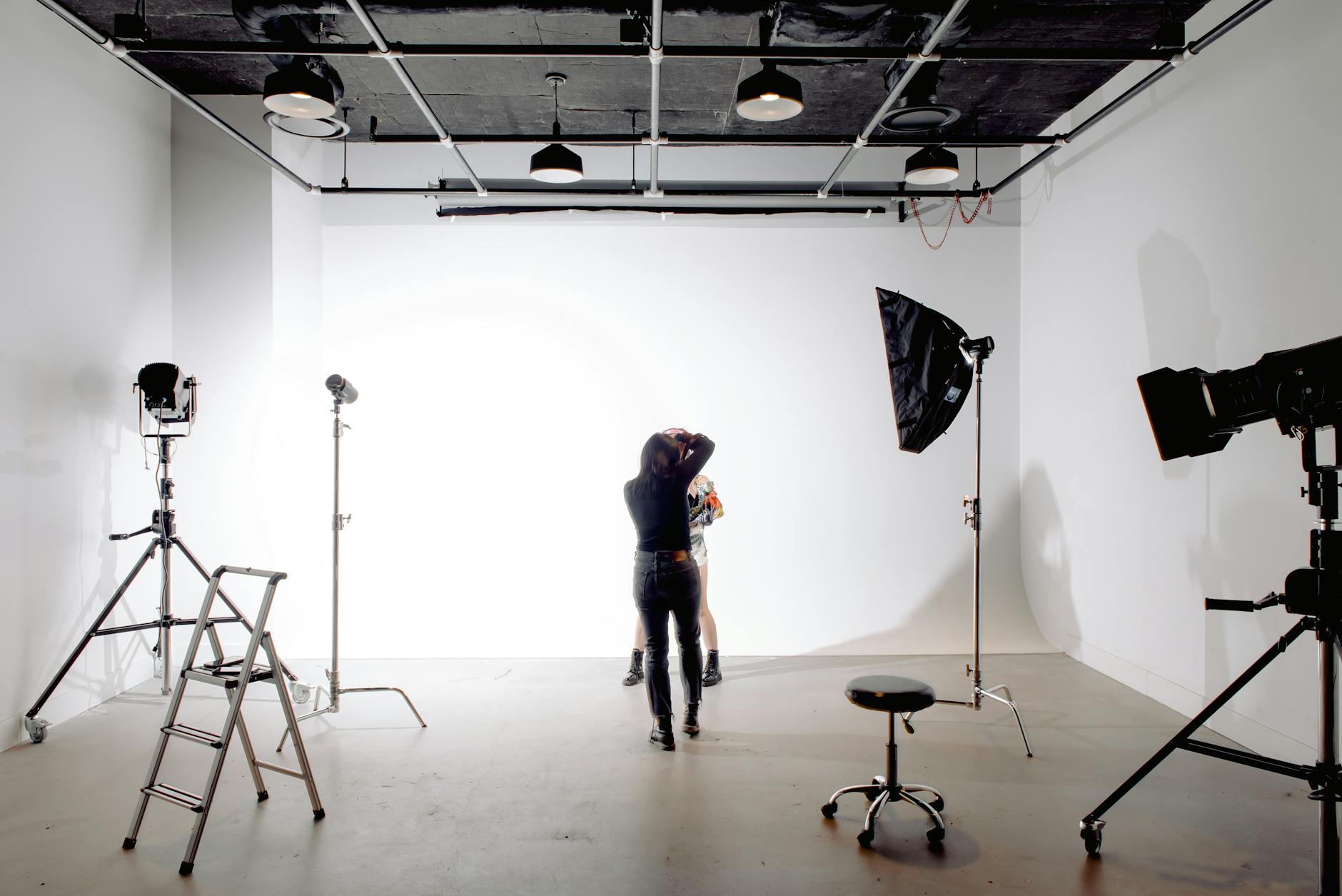Music educators of the world, unite! It’s time to tackle a topic that’s been causing furrowed brows and frustrated sighs for too long – time signatures. No more scratching heads over what 4/4 really means or why 6/8 isn’t the same as 3/4. We’re about to kick confusion out the door and usher in a rhythm revolution. With four exciting, fun-filled and highly effective methods, teaching time signatures is about to get a whole lot easier. So, whether you’re a seasoned music teacher or a passionate parent, strap in as we make music theory a joy to learn.
The Rhythm Revolution: 4 Exciting Ways to Teach Time Signatures
What are Time Signatures?
Time signatures are one of the fundamental concepts in music theory that help musicians understand the rhythmic structure of a piece. They provide a framework for organizing and interpreting the rhythm and meter of a composition. In simpler terms, time signatures tell us how many beats are in each measure and what type of note gets the beat.
Understanding the Basics
Imagine you’re standing in front of a chocolate chip cookie jar, ready to devour the delicious treats. The time signature is like the recipe that tells you how many cookies you can have in one serving. It consists of two numbers stacked vertically, like a fraction.
The top number tells you the number of beats or cookies in each measure, while the bottom number indicates the type of note that receives one beat or cookie. For example, in a 4/4 time signature, there are four beats in each measure, and a quarter note gets one beat. It’s like having four cookies in a serving, with each cookie representing a quarter note.
Why Time Signatures are Important in Music
Time signatures serve as a roadmap for musicians, guiding them through the rhythm and ensuring everyone stays in sync. Imagine a marching band without a conductor or a dance troupe without a choreographer; it would be chaos! Time signatures are the musical equivalent of a conductor, keeping everyone in time and creating a cohesive performance.
By understanding time signatures, musicians can anticipate the rhythmic patterns in a piece, allowing them to play with precision and synchronize with other musicians. It’s like knowing the exact steps to a dance routine before hitting the stage. Time signatures provide structure and organization to music, allowing musicians to create beautiful melodies and harmonies that captivate listeners.
Image: A group of musicians playing instruments
Now that we’ve covered the basics and highlighted the importance of time signatures in music, let’s dive into the exciting ways to teach this essential concept to aspiring musicians. Stay tuned for the next section, where we’ll explore interactive games and activities that make learning about time signatures a fun and engaging experience!
The Fun Side of Time Signatures
Time signatures may sound like a complex and serious topic, but did you know that exploring different time signatures can actually be a lot of fun? In this section, we’ll dive into the exciting world of time signatures and discover some engaging ways to teach them to kids. So let’s get ready to groove to the rhythm revolution!
Exploring Different Time Signatures
 Person Writing on a Black Board (Photo by Pavel Danilyuk)
Person Writing on a Black Board (Photo by Pavel Danilyuk)
When it comes to music, time signatures play a crucial role in defining the rhythmic structure of a piece. They tell us how many beats are in each measure and which note value receives the beat. But beyond their technicality, time signatures can open up a world of creativity and expression.
Think of time signatures as the unique DNA of a musical piece. Just like different species have their own genetic codes, different time signatures give each composition its distinctive flavor. Exploring various time signatures helps kids develop a deeper appreciation for the diversity of musical rhythms.
One way to make it fun is to play examples of songs in different time signatures and encourage kids to clap along. They can feel the difference between a waltz in 3/4 time and a catchy pop tune in 4/4 time. By actively engaging in these rhythmic experiences, children will develop a natural sense of groove and timing.
Time Signature Games for Kids
 A Cute Girl Recording a Video while Playing Ukulele (Photo by Mikhail Nilov)
A Cute Girl Recording a Video while Playing Ukulele (Photo by Mikhail Nilov)
Learning through play is always a winning strategy, and teaching time signatures is no exception. Here are some exciting games that will have kids laughing, learning, and grooving to the beat:
- Musical Chairs with a Twist: Set up chairs in a circle, with one less chair than the number of participants. Assign each chair a time signature (e.g., 4/4, 3/4, 2/4). Play music and have the kids walk around the chairs. When the music stops, they must quickly find a chair and match the time signature. This game not only enhances their understanding of time signatures but also gets them moving and having a blast!
- Rhythm Relay Race: Divide the kids into teams and assign each team a time signature. Create a rhythm pattern using claps, stomps, or simple instruments. One player from each team starts the rhythm and passes it on to the next player in line. The team that completes the pattern correctly and fastest wins the race. This game encourages teamwork, coordination, and sharp listening skills.
- Time Signature Treasure Hunt: Hide cards with different time signatures around the room or outdoor area. Give each child a map indicating the locations of the cards. The kids must hunt for the cards and match them to corresponding rhythms written on a separate sheet. This game combines physical activity with music theory, making it both educational and exciting.
By incorporating these games into music lessons or even casual playtime, children will not only grasp the concept of time signatures but also develop a genuine enthusiasm for rhythm and music.
Remember, learning should never be boring. With the right approach, teaching time signatures can be a joyful experience that nurtures a lifelong love for music. So let’s embrace the fun side of time signatures and let the rhythm revolution begin!
Teaching Time Signatures with Instruments
Using Drums to Teach Time Signatures
Drums are a fantastic tool for teaching time signatures because they provide a clear and rhythmic foundation. By using drums, students can feel the pulse and internalize the different beats within a time signature.
One effective way to teach time signatures with drums is to start with a simple time signature, such as 4/4. This is the most common time signature and can serve as a great starting point for beginners. Begin by demonstrating the steady beat on a bass drum or a floor tom. Encourage students to tap their feet or clap their hands along with the beat.
Next, introduce the concept of subdivisions by incorporating a snare drum or a hi-hat. Show students how to count and play eighth notes within the 4/4 time signature. Encourage them to play along with you, gradually increasing the complexity by introducing different rhythmic patterns.
To add an element of fun and engagement, consider using colorful drumsticks or even introducing drumming games. Create a challenge where students have to play a specific time signature correctly to win points or rewards. This gamification approach can make learning time signatures with drums a memorable and enjoyable experience.
Using Other Instruments to Demonstrate Time Signatures
While drums are a powerful instrument for teaching time signatures, it’s important to explore other instruments as well. This allows students to gain a well-rounded understanding of how different sounds and techniques can contribute to the overall rhythm of a piece.
One instrument that can effectively teach time signatures is the piano. The piano provides a visual representation of the music, making it easier for students to grasp the concept of time signatures. Start by showing the placement of notes on the sheet music and how they align with specific beats. Demonstrate how different time signatures affect the rhythm and pacing of the piece.
Another instrument that can be used to demonstrate time signatures is the guitar. The guitar’s versatility allows for various strumming patterns and rhythmic techniques. Show students how to count and play different time signatures using chord progressions and strumming patterns. Encourage them to experiment and create their own compositions within the given time signature.
Remember, it’s essential to provide students with opportunities for hands-on learning. Allow them to explore different instruments and experiment with creating their own rhythmic patterns. By doing so, they will not only understand time signatures better but also develop their musical creativity and expression.
 From above of crop faceless female stringing colorful bead on elastic rope while sitting at table with container of various supply (Photo by Miriam Alonso)
From above of crop faceless female stringing colorful bead on elastic rope while sitting at table with container of various supply (Photo by Miriam Alonso)
Links for further reading:
Incorporating Movement and Dance
Dance moves and rhythmical choreography are exciting ways to teach time signatures. By incorporating movement and dance into music education, students can better understand the concept of time signatures and develop a deep connection with rhythm. In this section, we will explore dance moves for different time signatures and how to create rhythmical choreography that enhances the learning experience.
Dance Moves for Different Time Signatures
Dance moves can be tailored to different time signatures to help students internalize the rhythmic structure. Here are some fun and engaging dance moves for various time signatures:
- Four/Four (4/4): This is the most common time signature and can be represented by a simple step-touch movement. Students can step forward on the first beat and touch their toes together on the second beat, repeating this pattern throughout the music.
- Three/Four (3/4): This time signature is often associated with waltz music. Students can learn a basic waltz step, taking three steps in a circular motion, with the third step being slightly longer to match the emphasis on the first beat.
- Six/Eight (6/8): This time signature has a distinct feel that lends itself well to a variety of dances. Students can learn a lively and energetic movement, such as a side-to-side step with a small jump on the fourth and sixth beats.
Remember, these dance moves serve as tools to reinforce the understanding of time signatures. Encourage students to experiment with their own movements while maintaining the underlying rhythmic structure.
Creating Rhythmical Choreography
Once students have a grasp of different time signatures through dance moves, they can take their learning a step further by creating rhythmical choreography. This process allows them to explore their creativity while solidifying their understanding of time signatures.
Here’s a step-by-step guide to creating rhythmical choreography:
- Select a Time Signature: Choose a time signature that you want to work with. It could be the one you’ve been practicing or a new one to challenge yourself.
- Listen to the Music: Find a piece of music that corresponds to the selected time signature. Listen to it carefully and identify the rhythmic patterns and accents.
- Break It Down: Analyze the music and break it down into smaller sections. Identify the strong beats and accents within each section.
- Experiment with Movement: Start experimenting with different dance moves and gestures that align with the rhythmic patterns and accents of the music. Allow your body to express the music’s energy and emotions.
- Combine and Refine: Combine the different movements and gestures into a cohesive choreography. Pay attention to transitions between sections and make adjustments as needed to maintain the flow and coherence of the dance.
- Practice and Perform: Practice the choreography until you feel comfortable performing it. Share your creation with others, whether it’s in a classroom setting or a performance.
Creating rhythmical choreography not only reinforces the understanding of time signatures but also encourages self-expression and creativity. It allows students to connect deeply with the music and develop a sense of ownership over their learning.
 Full body smiling diverse couple in casual wear with photo camera standing near fence on wooden footbridge in park (Photo by Uriel Mont)
Full body smiling diverse couple in casual wear with photo camera standing near fence on wooden footbridge in park (Photo by Uriel Mont)
Now that we’ve explored dance moves for different time signatures and the process of creating rhythmical choreography, let’s move on to other exciting ways to teach time signatures in the next sections. Stay tuned!
(Note: Links to external websites can be added for contextual information within the content)
Making Time Signatures Memorable
Teaching time signatures can be a challenging task, especially when trying to make them memorable for students. However, with the help of mnemonic devices and catchy songs, you can turn this potentially dry topic into an exciting and engaging experience. In this section, we will explore two fun and effective methods for making time signatures memorable: mnemonic devices and catchy songs.
Mnemonic Devices for Remembering Time Signatures
Mnemonic devices are memory aids that help us remember information by associating it with something more familiar or easier to remember. When it comes to time signatures, creating a mnemonic device can make it easier for students to recall the specific numbers and their meanings. Here are a few examples:
- Common Time (4/4): Imagine a crowded dance floor where people are moving in sync to the beat. The number 4 represents the four beats in each measure, and the visual of people dancing together can help students remember that this time signature is commonly used in dance music.
- Cut Time (2/2): Picture a pair of scissors cutting through a piece of paper. The number 2 in the time signature represents the two beats in each measure. Associating the act of cutting with the time signature will help students remember that Cut Time is essentially half of Common Time.
- Waltz Time (3/4): Imagine a graceful waltz dance with three dancers twirling elegantly across the dance floor. The number 3 in the time signature represents the three beats in each measure. Visualizing the dance can help students associate the time signature with its distinct waltz rhythm.
Creating Catchy Songs for Time Signatures
Music has the power to stick in our minds, and catchy songs can be a great tool for teaching time signatures. By creating simple tunes or adapting popular songs to fit different time signatures, you can make learning about time signatures a fun and memorable experience. Here are a few examples:
- Four by Four (4/4): Create a catchy song that emphasizes the repeated pattern of four beats. Use lyrics that mention counting to four and incorporate actions or clapping to help students internalize the rhythm. You can even encourage them to make up their own dance moves to go along with the song.
- Two Beats to Cut (2/2): Adapt a familiar song with a strong and steady beat to fit the Cut Time signature. Modify the lyrics to mention the concept of “two beats to cut” and encourage students to tap their feet or clap their hands in time with the rhythm.
- Waltzing in Three (3/4): Compose a simple waltz tune that showcases the distinct triple meter of the time signature. Use lyrics that mention the number three and encourage students to sway or dance along with the music to reinforce the waltz rhythm.
Remember, the key to creating catchy songs is to keep them simple, repetitive, and enjoyable. By incorporating these songs into your teaching, you can help students remember the different time signatures while having a great time.
 Back view of unrecognizable professional photographer taking photo of anonymous model in modern light studio (Photo by Harrison Haines)
Back view of unrecognizable professional photographer taking photo of anonymous model in modern light studio (Photo by Harrison Haines)
To learn more about time signatures and their significance in music theory, you can visit MusicTheory.net. Their comprehensive lessons provide additional context and examples to support your teaching.
In the next section, we will explore another engaging method for teaching time signatures: rhythm games. Stay tuned!
Conclusion
Mastering time signatures doesn’t have to be a snooze-fest! In fact, it can be a total rhythm revolution! By incorporating these four exciting teaching methods, you’ll have your students tapping their feet and counting beats in no time.
First, get them moving with the power of dance! Let their bodies feel the pulse of the music as they sway, stomp, and twirl to different time signatures. Not only will this make learning fun, but it will also help them internalize the rhythm on a whole new level.
Next, unleash their inner composers by encouraging them to create their own melodies in various time signatures. By giving them the freedom to experiment and explore, they’ll gain a deeper understanding of how different time signatures can evoke different emotions and moods.
Thirdly, use technology to your advantage. There are countless online tools and apps that can transform the learning experience into an interactive and engaging adventure. From rhythm games to virtual metronomes, these digital resources will make time signature practice feel like playtime.
Last but not least, don’t forget to tap into the power of group dynamics. Create opportunities for collaboration, such as ensemble playing or group compositions. Working together not only fosters a sense of camaraderie but also allows students to hear and feel the intricate interplay of different time signatures.
So, wave goodbye to boring time signature lessons and say hello to the rhythm revolution! With these four exciting teaching methods, you’ll be turning your students into time signature experts in no time. Get ready to witness their enthusiasm soar as they embrace the beat and groove to the music like never before. Let the rhythm revolution begin!
